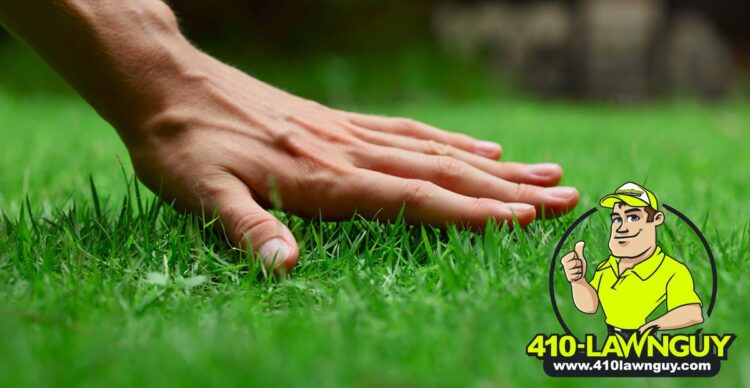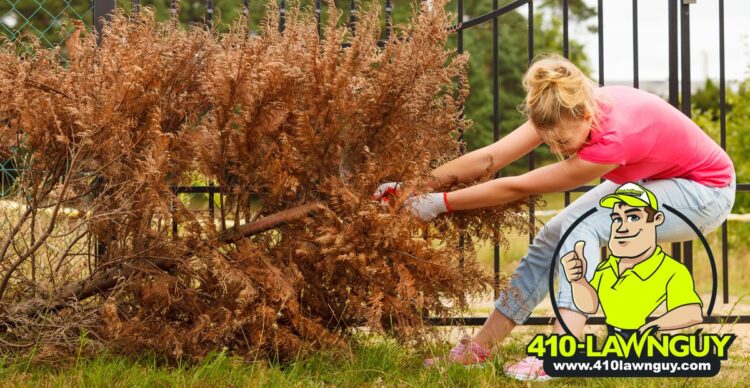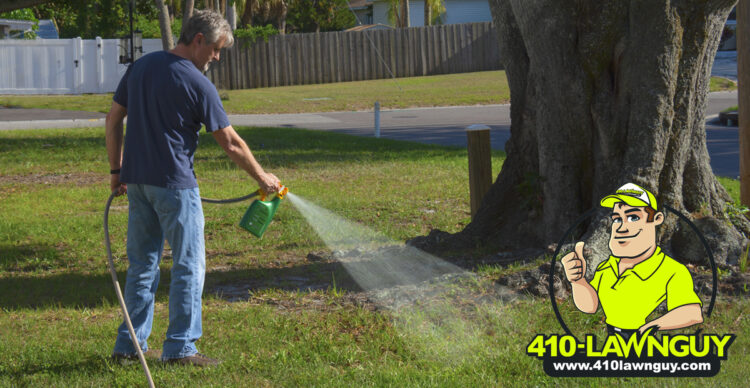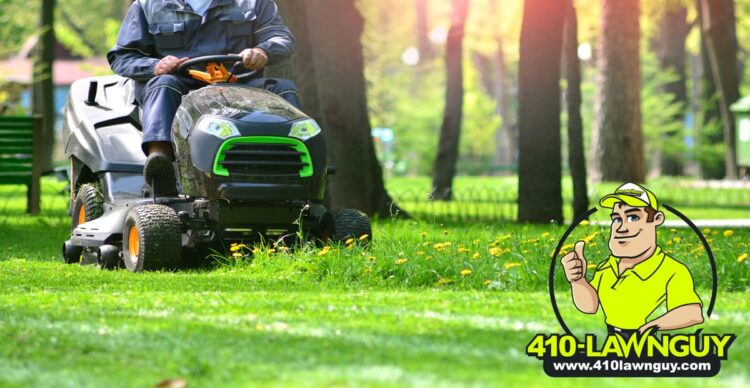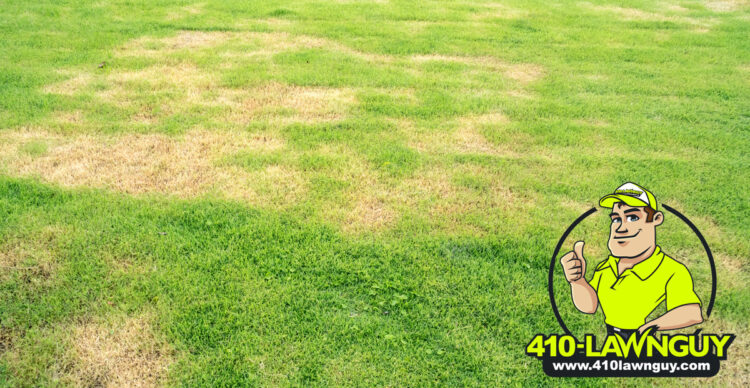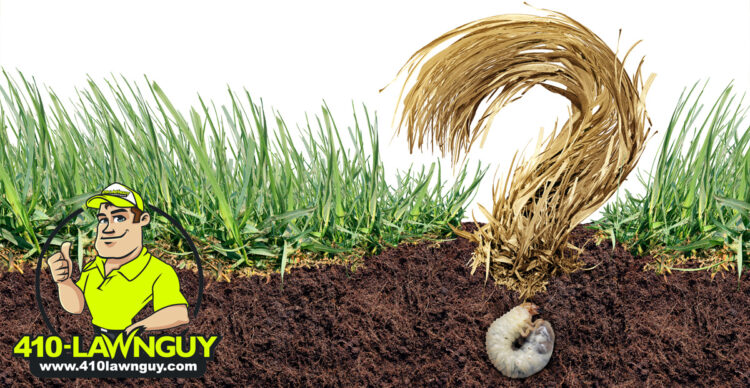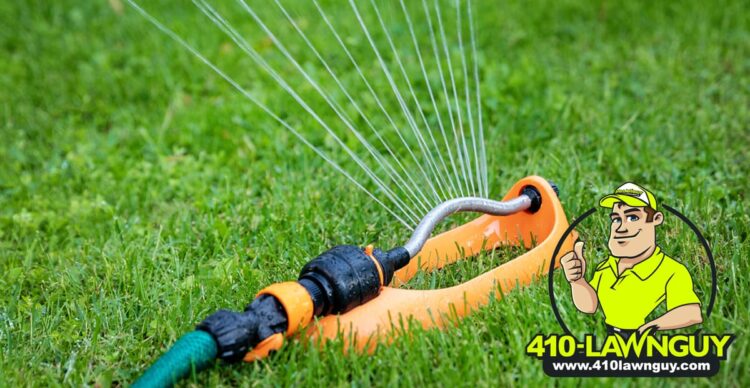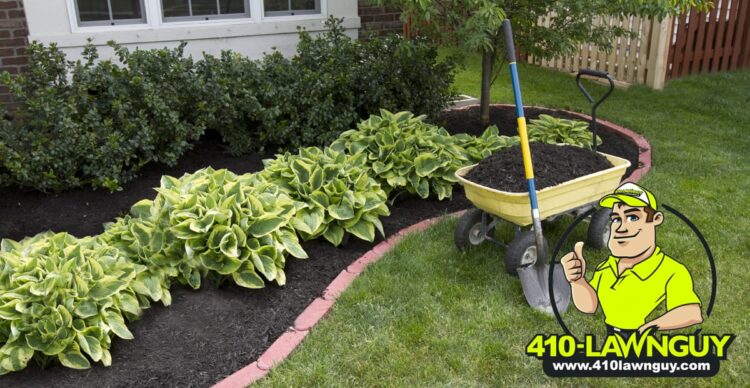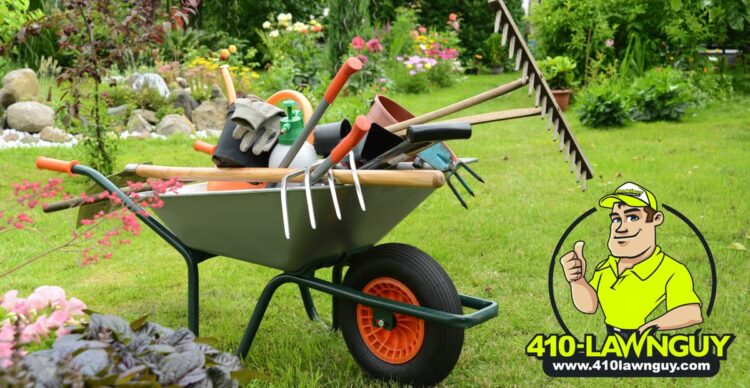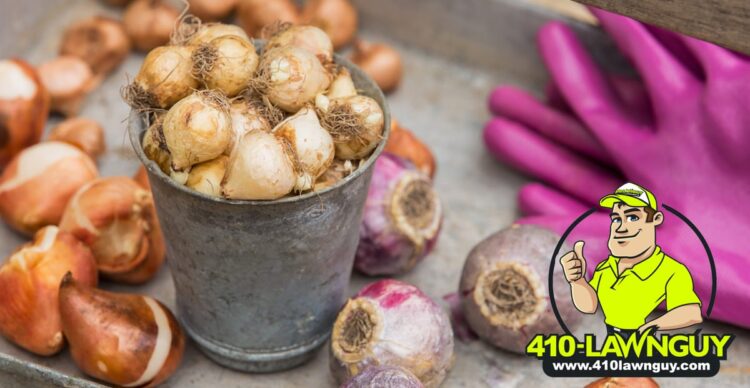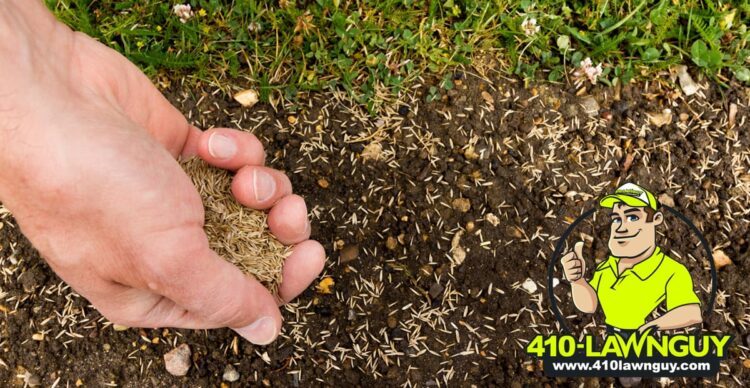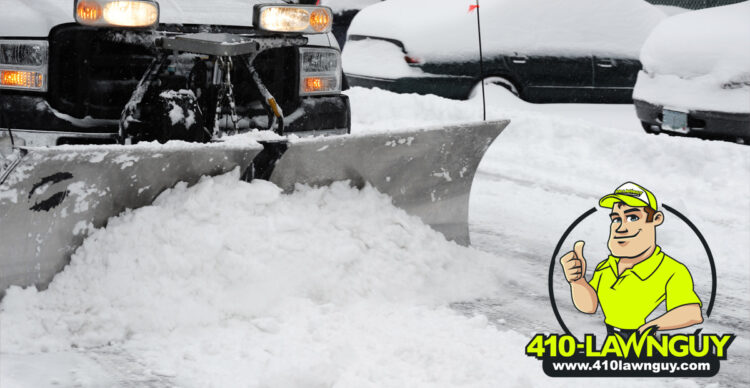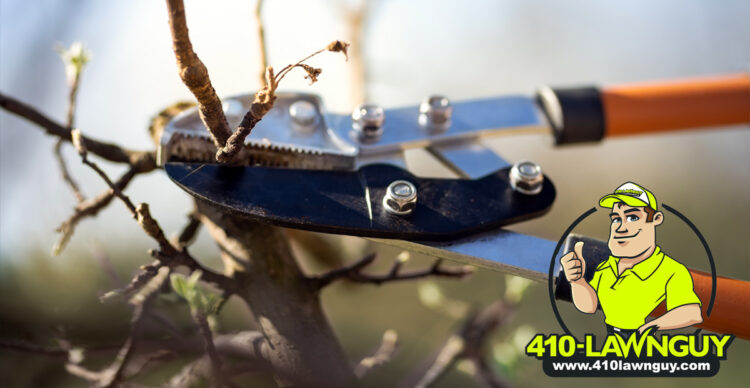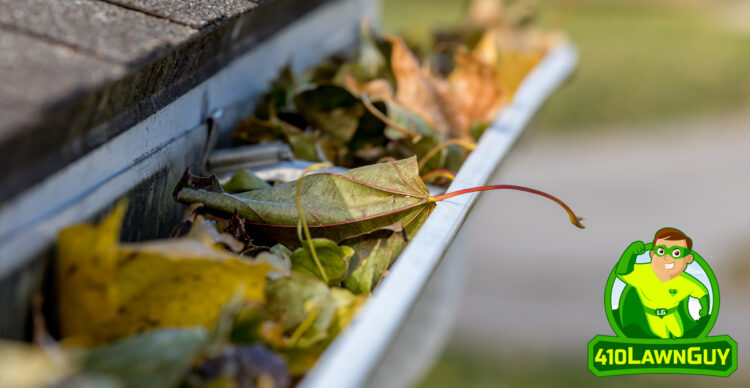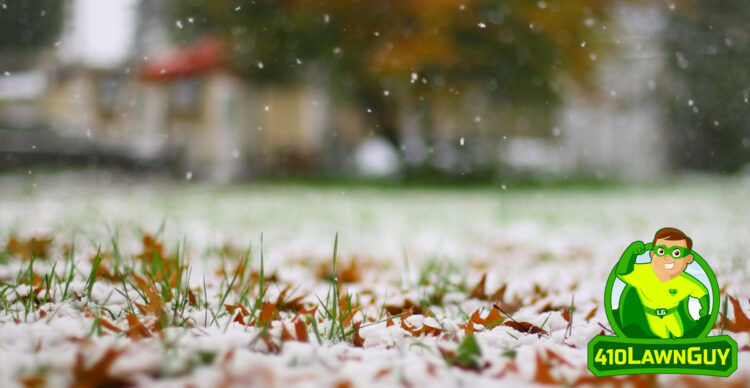One of the best ways to have a healthy lawn in Maryland is planting perennial common grass types native to the area. While some grasses are nicer to look at or feel better underfoot, invasive or introduced grasses can wreak havoc on the native pollinators and plants. Maryland Common Grass Types If you live in Maryland and need to plant grass in your yard, consider some of these grasses: Broomsedge bluestem Little bluestem Prairie cordgrass Saltmeadow cordgrass Smooth cordgrass Eastern bottlebrush grass Red fescue Eastern gamagrass Eastern blue-eyed grass Narrowleaf blue-eyed grass Mudplantain grassleaf Indiangrass Coastal panicgrass Blue sedge Pennsylvania sedge Upright sedge Switchgrass Canada wildrye Virginia wildrye Indian woodoats These Maryland grasses bloom between June and October. You can choose one type for your entire yard or mix them up to add interest and texture to your landscape. Maryland Invasive and Introduced Grasses According to the Maryland State Archives, the following grasses are considered invasive and introduced. If you are looking to help local pollinators thrive, especially if you have fruits or vegetables growing, avoid using these grass types: Bamboo Wavyleaf basketgrass Japanese silver grass Japanese stilt grass Johnson grass Pampas grass Reed canary grass Japanese knotwood Chinese lespedeza
GET THE FACTS >> →Do you have trees in your yard that have seen better days? Worried they might be dead trees, posing a risk to your home or your neighbor’s if they fall? You can’t always tell a dead tree by looking at it, and sometimes, a tree may look dead but isn’t. If you’re trying to figure out if you have dead trees in your yard before calling in the professionals to take them down, here are some tips to help. Identifying a Dying or Dead Tree in Your Yard If you catch it soon enough, a sick or dying tree may be able to be saved. But a dead tree poses a real risk to you and your home, especially large trees that could cause extensive damage. Some telltale signs of a dead tree include: Peeling bark Trunk cracks or splits Mushrooms growing near the base Several branches without living buds If you have a tree in your yard with these signs, it’s past saving, and you should remove it. However, there’s a simple test you can use if you still aren’t sure about the health of your trees. Using your fingernail or a small knife, scratch a few of the
GET THE FACTS >> →Adding perennials to your garden is a great way to incorporate lasting color with less maintenance. Annuals may have a more extended bloom season than some perennials, but they won’t come back next year, requiring you to replant your garden each season. When choosing perennials for your Maryland garden, there are a few things to consider to make your landscaping efforts provide curb appeal and a wow factor. Hardiness Zone Depending on where you live in Maryland, you could be in one of five hardiness zones: 5b 6a 6b 7a 7b The hardiness zone you live in is based on frost dates and weather patterns. Zones five and six are hardy down to -20 degrees, while zones seven and eight are only hardy down to 0 degrees Fahrenheit. Knowing which zone you are in can help you select the right perennials to flourish best in your zone. The hardiness zone also determines the best time to plant for the best results. Sun Tolerance Plants need sunlight to survive, but each perennial has its own amount of sun tolerance. A perennial requiring outdoor shade would burn up and die in full sun, and a perennial needing full sun won’t grow in
GET THE FACTS >> →No matter how much effort you put into maintaining your lawn, you’re bound to get weeds at some point. In Maryland, there are several weeds to contend with, and most of them can multiply quickly. The problem with most weeds in Maryland is the seeds travel with the wind. So, even if you get rid of the offenders taking up residence in your yard, they can quickly germinate and take root in your lawn. Once a weed seed lands in your yard, it can stay dormant for years. When conditions are right, they germinate and spread roots, making it more difficult to get rid of them. In Maryland, these conditions include: Improper Lawn Mowing Not Watering Your Lawn Correctly (Under-Watering Or Over-Watering) Not Using The Proper Fertilizing Methods Warm Temperatures Poor Soil Bare Or Thinning Spots In Your Lawn Common Weeds in Maryland Most weeds in Maryland fall into two categories; broadleaf and grass weeds. There can be a number of both lying dormant in your lawn, just waiting to make their appearance and take over. The University of Maryland has an extensive weed identification and management guide to help you identify and eradicate these common Maryland weeds. Maryland Broadleaf
GET THE FACTS >> →We all know that to keep our lawns looking healthy, lush, and manicured, regular lawn mowing is essential. Keeping our grass cut to a manageable height also lessens our workload. It keeps our lawn mowing tools from getting clogged and overrun with overgrown grass. However, simply knowing that we do need to mow our lawn regularly is relatively ambiguous. In this article, we’ll be giving an in-depth look at the optimal ways to cut our lawns to keep them in tip-top shape. Devise a Lawn Mowing Schedule The frequency at which you should be mowing your lawn depends on your climate. It also depends on the amount of sun and water your lawn receives, and the type of grass you’re growing. A general rule of thumb is never to mow more than a third of the total height of grass to avoid stressing your lawn unnecessarily. For example, if you prefer to cut your yard to one inch high, you’d cut your grass when it reaches one and a half inches tall. Some lawns you will need to mow weekly. For extremely prolific yards, this could be up to twice a week or more. Grass that doesn’t receive the optimal
GET THE FACTS >> →Meticulously taking care of our grass to achieve a perfectly lush, emerald-green lawn is somewhat of an American tradition. No one is expecting dead grass patches to show up! We diligently water, fertilize, weed, mow, and lovingly tend to their every need even in the scorching hot heat of summer, all to achieve gorgeous curb appeal (and the envy of all our neighbors, if we’re totally honest). But what happens when you end up with stubborn dead grass patches that no amount of watering seems to fix? In this article, we’ll explore what you need to do to care for and eradicate your dead patches. Take A Look At Your Mowing And Watering Schedule Our first tip will take you all the way back to the basics of lawn care: how often and how much you’re watering your lawn, and how often and how short you’re mowing it. Underwatered grass will act like any other living thing in the absence of water: it’ll become dangerously dry, shrivel up, and if you don’t proactively water it, it’ll die. This is the case even if you have automatic sprinklers or a robust watering routine. Any patches that you don’t water adequately can
GET THE FACTS >> →Meticulously taking care of our grass to achieve a perfectly lush, emerald-green lawn is somewhat of an American tradition. We diligently water, fertilize, weed, mow, and lovingly tend to their every need, even in the scorching hot heat of summer. And it’s all to achieve gorgeous curb appeal (and the envy of all our neighbors, if we’re sincere). But what happens when you end up with stubborn dead patches that no amount of watering seems to fix? In this article, we’ll explore what you need to do to care for and eradicate your dead patches. 1) Take a look at your mowing and watering schedule Our first tip will take you all the way back to the basics of lawn care: how often and how much you’re watering your lawn, and how often and how short you’re mowing it. Underwatered grass will act like any other living thing in the absence of water: it’ll become dangerously dry, shrivel up, and if you don’t proactively water it, it’ll die. This is the case even if you have automatic sprinklers or a robust watering routine. Any patches that aren’t adequately watered can and will leave an unsightly dead patch. Overwatering your grass,
GET THE FACTS >> →A fruits and vegetables garden offers you many benefits like access to fresh produce. To enhance your harvest, you need to consider the planting time. Most importantly, the planting time and season mainly depend upon the weather the vegetables can tolerate. Notably, you only need to consider two main types of fruits and vegetables: warm season and cool season. Therefore, the question is, when is the best time to plant? When to Plant Cool Season Vegetables You can know cool season vegetables by edible buds, leaves, or stems, think cabbage, potatoes, and onions. The crops must mature when the weather is still cool. Cool season vegetables usually have shallower roots than warm season vegetable plants. In normal circumstances, they stop producing in early summer when temperatures surge to 80°F. Their ideal planting time is in spring, when soil temperatures range between 40°F and 75°F. Plant these vegetables between 2-4 weeks before the last spring frost. Don’t plant them in soggy soil, as they might rot. Most seed packages will come with the desired soil temperature to sow the seeds for the vegetables. It is advisable to have a soil thermometer, which comes in handy. Here are examples of crops for
GET THE FACTS >> →A perfect lawn is the dream of every homeowner, as it gives your surroundings an aesthetic appeal. Managing a lawn requires basics such as watering, mowing, landscaping, and fertilizing. However, insect control is one of the most challenging lawn maintenance tasks. Generally, pests that affect lawns vary, with some living underground, while others inhabit the surface. Once insects attack your lawn, it is advisable to address the problem immediately to prevent further damage. An insect-free lawn is a pleasant place for family and friends to gather and enjoy your outdoor spaces. How to Detect Insects in Your Lawn Insect control should be a basic lawn maintenance practice. Therefore, while carrying out routine maintenance, you need to combine several approaches that will help you identify the types of insects attacking your lawn. Visual Examination for Insect Control Scan the lawn for patches. Most patches occur from pests such as moths, white grubs, and black turfgrass beetles. Monitor the grass for sections that have been chewed off or are missing as it might signify a moth problem. Furthermore, look at any brown lawn sections overall, and if the blades appear chewed, then it is a moth problem. Additionally, drying grass indicates there
GET THE FACTS >> →To maintain a lush and green lawn, adequate and regular watering is needed. Even if you have healthy soil, a lack of enough water supply will lead to the grass’s shriveling up. At the same time, with excess water, the grass will be oversaturated and eventually die. Watering a lawn might appear like a simple task; however, there are factors to consider, like how often and what time of day your grass needs water supply? How Often Should You Water the Lawn? The frequency of watering your lawn depends on several factors like the type of soil. For instance, if you have clay soil, you should water at least once a week due to its ability to retain water for long hours. On the other hand, you should water sandy soil at least three times a week. Watering the lawn more frequently, however, comes with the risk of overwatering. It is worth mentioning that too frequent or light watering can encourage fungus growth alongside shallow root structure. Adequate watering will soak the soil and encourage the roots to grow deeper and stronger. What Is the Right Time Of the Day to Water the Lawn? Although your lawn needs a constant
GET THE FACTS >> →Using mulch is part and parcel of gardening as it supports some natural processes in your garden. If you carry out mulching correctly, your garden will reap several benefits while cutting down on watering, weeding, and pest control expenses. Notably, you can incorporate it into any gardening system. So, what are the benefits of mulching to your garden? The Benefits Of Mulching Your Flower Beds and Trees To get the full benefits of mulching, ensure the layer is at least 5 -7.5 inches. The mulch offers the following benefits to your flower beds and trees. Helps With Weed Problems A good layer inhibits the growth of weeds in the soil. It is the solution for a weed-free garden. A weed-free garden ensures the flower bed and trees have all the nutrients without competition. Retains Moisture and Nutrients AThe same layer helps with water and nutrient retention. Furthermore, if you opt for organic material, it will release the nutrients into the soil on decomposition. Moreover, it will help the plants survive hot weather like during the summer. Soil Temperature Regulation Mulch ensures plants remain in stable condition without being stressed in conditions of fluctuating temperatures. This is beneficial, especially during the
GET THE FACTS >> →The exhaustion you feel from Daylight Saving Time may also put some wind in your sails. The time change signals that winter is about to leave, ushering in spring! Time to put away the snow shovels and start putting your spring plan into action. Let the Spring Prepping begin! What should you do when prepping your lawn for spring? Here are six tips to get your yard ready for summer? Spring Prepping – Cleaning First things first – time to assess the damage caused by the winter season. As soon as it’s warm and dry enough, take a walk around your yard and clean up debris. You should remove leaves, twigs, branches, acorns, and litter. Inspect your soil, grass, trees, shrubs, and garden structures to see what’s growing back and which section needs the most attention. Create a plan to tackle it when the ground isn’t saturated, which can create further damage. Rake the Grass Thatch, the layer of dead turfgrass covering the soil and root system, needs to be tended to. No matter how vigorously you raked in the fall, don’t skip this step. Raking not only gets rid of the thatch covering, but it also stimulates the grass
GET THE FACTS >> →Spring is in the air, despite the wet weather we’ve been getting. Have you planned out your garden for this year? If not, you may be wondering if it’s better to plant annuals or perennials. Annuals are colorful flowers even the most novice gardener can keep going. They are inexpensive, usually have a long bloom time, and can add bright cheer to your home’s exterior. The biggest downside to annuals is that when they die, they won’t come back, so you have to buy and plant them every year. Perennials, however, come back year after year, sometimes for decades. Perennials include flowers, fruits, legumes, nuts, and vegetables. The foods we eat come in both annuals and perennials. Today, we’re making a case for including perennials in your garden. Here are four reasons why perennials make sense. Water Conservation Annuals are particular about water – too much, and they rot, not enough, and they can burn in the harsh Maryland summers. Even still, annuals require frequent watering, sometimes twice a day when it’s hot and not so humid (which is rarely the case here). Perennials, though, require watering while the roots are getting established but can adapt more easily to the
GET THE FACTS >> →Planting bulbs in your garden is easy, and the colorful displays you receive once they bloom are a prominent sign of a job well done. But when should you plant bulbs in your gardens for maximum impact during peak season? The answer to this depends on the type of bulbs you’re planting and whether they are spring-blooming or summer-blooming bulbs. Here are some tips to use for planting bulbs in the right place and time in your gardens. Know Your Bulbs It doesn’t matter if you’re a serious gardener or a beginner; flowers grown from bulbs are a simple way to beautify your landscape design. You want to choose large and firm bulbs, avoiding any that are soft or mushy. While it’s normal to choose flowers based on colors and presentation, you have to know if they will bloom in spring or summer. When they bloom will determine when you should plant them. It would be best if you planted Spring-blooming bulbs in the fall after soil temperatures have cooled. Living in the transition zone of the Mid-Atlantic, that could mean as late as October or even November. Evening temperatures should be between 40 to 50 degrees, and the ground
GET THE FACTS >> →We may be just getting into winter here in Maryland, but some are already thinking about prepaing to seed in the spring. There are so many things to do to prepare for the new season. It’s time to start planning out your garden, determining if you need to make changes to your landscape design, and getting your seeds ready to germinate. As you look out the window at your yard, are you wondering how early is too early to seed in the spring? The brown patches of grass and bare spots full of mud after the snow has melted are an eyesore for many. Unfortunately, Punxsutawney Phil saw his shadow as he came out of his hole. So we have at least six more weeks of winter with which to contend. That doesn’t mean we can’t make plans for the spring that will eventually come our way. One of the challenges of living in Maryland is our hot and cold overlapping climate puts us in the transition zone. It makes it harder to determine the best time in spring to begin seeding. Why Timing and Seed Choice Matter If you seed too early, you risk the soil being too cold
GET THE FACTS >> →As January comes to an end, winter really starts to take hold here in Maryland. If we’re lucky, that means snow is not too far off. If you live on a private road, you know all too well the headache it can cause to get someone to come. When it comes to plowing private roads, whose responsibility is it, and why do communities, cities, and towns refuse to take care of it? Liability Exposure The biggest (and most expensive) reason counties around Maryland and other states refuse to take on private roads for plowing? It is the liability exposure it presents. All it takes is one person falling and hurting themselves for someone to place blame where they think it should lie. And that is typically with the plow company. While some county plow truck drivers may want to help out by plowing private roads, they really shouldn’t. Public funds used to pay for this service can only be used on public roads and not for personal purposes. If the general public finds out public funds are being used for private matters, you can imagine what that could cause. Another potential liability exposure is damage caused by pushing snow out of
GET THE FACTS >> →Planting Grass and Trimming Back Shrubs What are they doing?! You wonder as you watch your neighbor outside in the dead of winter, pruning their shrubs and throwing out grass seed. Do they know something I don’t? What’s the deal with winter lawn maintenance? When planting grass and trimming back shrubs, what time of year is best? It really depends on the type of grass and shrubs you have. Planting Grass If you missed the fall window to lay down seed, you might be waiting until spring comes around. However, depending on the type of grass in your yard, winter might be the best time to overseed bare spots and thicken up your lawn. It’s best to do dormant seeding with cool-season grasses: Tall fescue Bluegrass Perennial ryegrass Seeding now, as a part of your winter lawn maintenance, rather than waiting until spring, allows the grass seed time to germinate before existing grass and other plants begin to sprout. Frost and snow seeding also have their advantages. The freeze and thaw cycle that comes along with cold night temperatures and warm day temperatures creates pockets and small cracks in the soil. This process provides natural aeration, allowing the seeds to
GET THE FACTS >> →The change of seasons from summer to fall brings brilliant colors, crisp air, and nights spent around a campfire. Unfortunately for some homeowners, fall also means leaves everywhere. The magic starts to fade as you see leaves covering your roof, gutters, and yard. If cleaning out your gutters is part of your fall to-do list, here are a few methods you can use to get it done as fast as possible and mark this task completed. Leaf Blower If you have a leaf blower, it can be one of the fastest ways to clean your gutters. When using this method, the most effective way is to get on the roof and blow the leaves from the gutters down to the ground. Make sure you do this safely: Use an extension ladder to get on the roof safely Wear safety goggles to keep leaves and gutter gunk out of your eyes Tie yourself off to a safe area to avoid falling off the roof while you’re working Be sure to blow the leaves over the gutter so they fall down on the ground rather than into the downspout. Don’t forget to check the downspout to make sure nothing gets blown in,
GET THE FACTS >> →Shade trees are wonderful to combat the intense heat of summer but come fall, homeowners might sing a different tune. You’ve watched the healthy green leaves turn into beautiful hues of yellow, orange, and red. Now, they’re falling off to settle on the ground below. You let out a big sigh because you know that means one thing. It’s time to rake up those once beautiful leaves before winter comes. But, is it okay to mow leaves instead? The chore of raking leaves can be time-consuming, back-breaking, exhausting work, especially if you have a big yard and lots of trees. If raking up all those leaves keeps getting added back to your to-do list, you may have another option. Is it okay to mow leaves instead of raking? Yes, it’s alright to put the rake down and turn on the lawnmower to handle the leaves on the ground. In fact, over the years, studies have confirmed it’s actually better for your lawn to mulch the leaves rather than rake them. Here are a few benefits you can expect from mowing your leaves instead of raking them. Fewer Weeds When mulched into small pieces, the leaves will naturally fall between the
GET THE FACTS >> →We know you won’t be outside mowing the lawn and tending your garden over the winter. But, that doesn’t mean you should ignore your yard until the warm weather returns. You don’t want your lawn looking like a brown, dry, lifeless mess when the seasons change. There are a few things you can do with your lawn in winter to get a jumpstart on spring. Aerate Your Lawn In Winter Over time, the soil in your yard can get compacted, especially in high-traffic areas. This can limit the number of nutrients your grass can absorb and prevent the ground from draining properly. One way to improve drainage and ensure your grass is getting the nutrients it needs to stay healthy is to aerate your lawn in winter. You can do this with a power aerator if you have a large yard. This machine will puncture the earth, allowing air to flow and water to get down into the soil. If your yard is on the smaller side, you can also do this by hand using a pitchfork. If your lawn could benefit from aeration, be sure to get it done before the first frost. Fertilize Fertilizing is another way to
GET THE FACTS >> →
